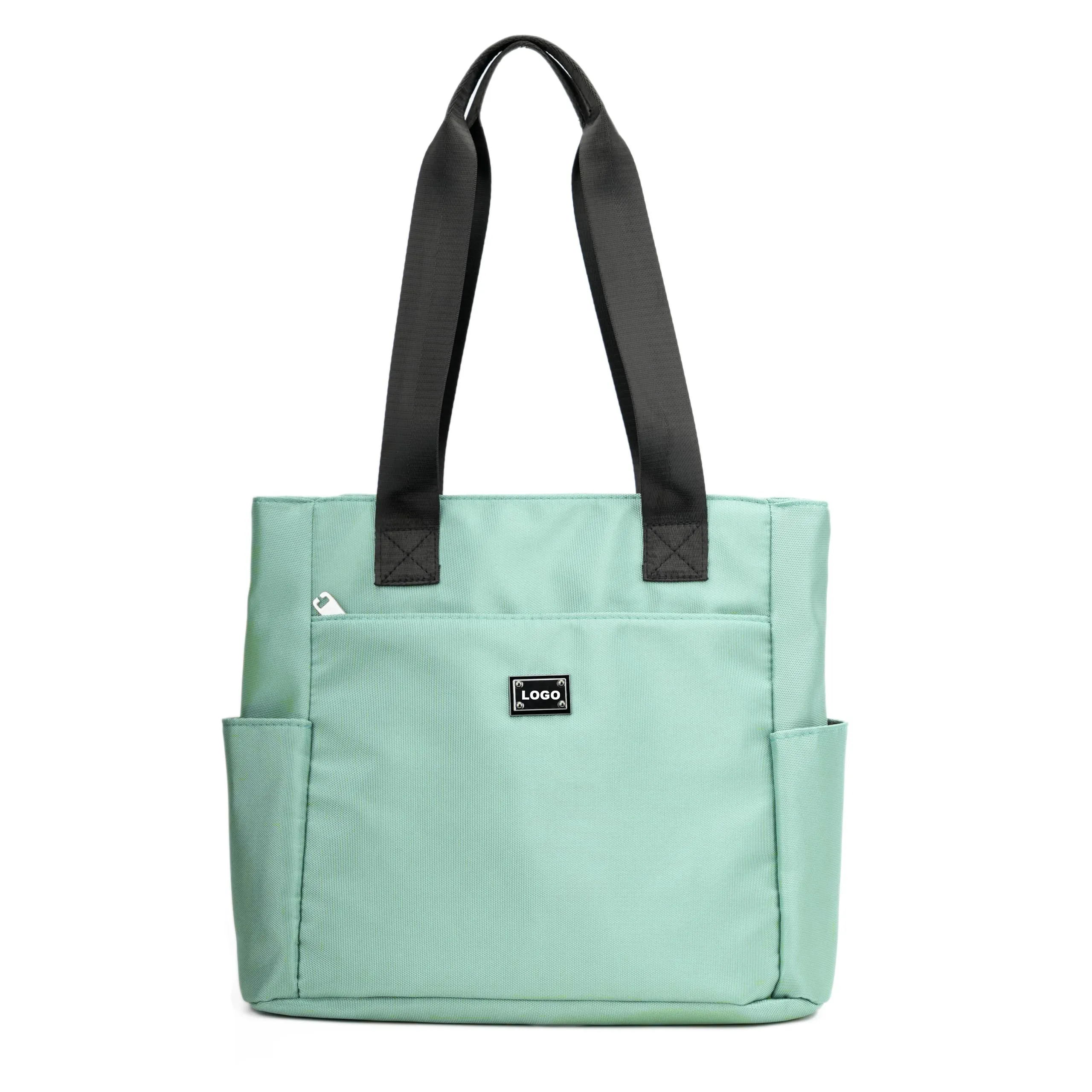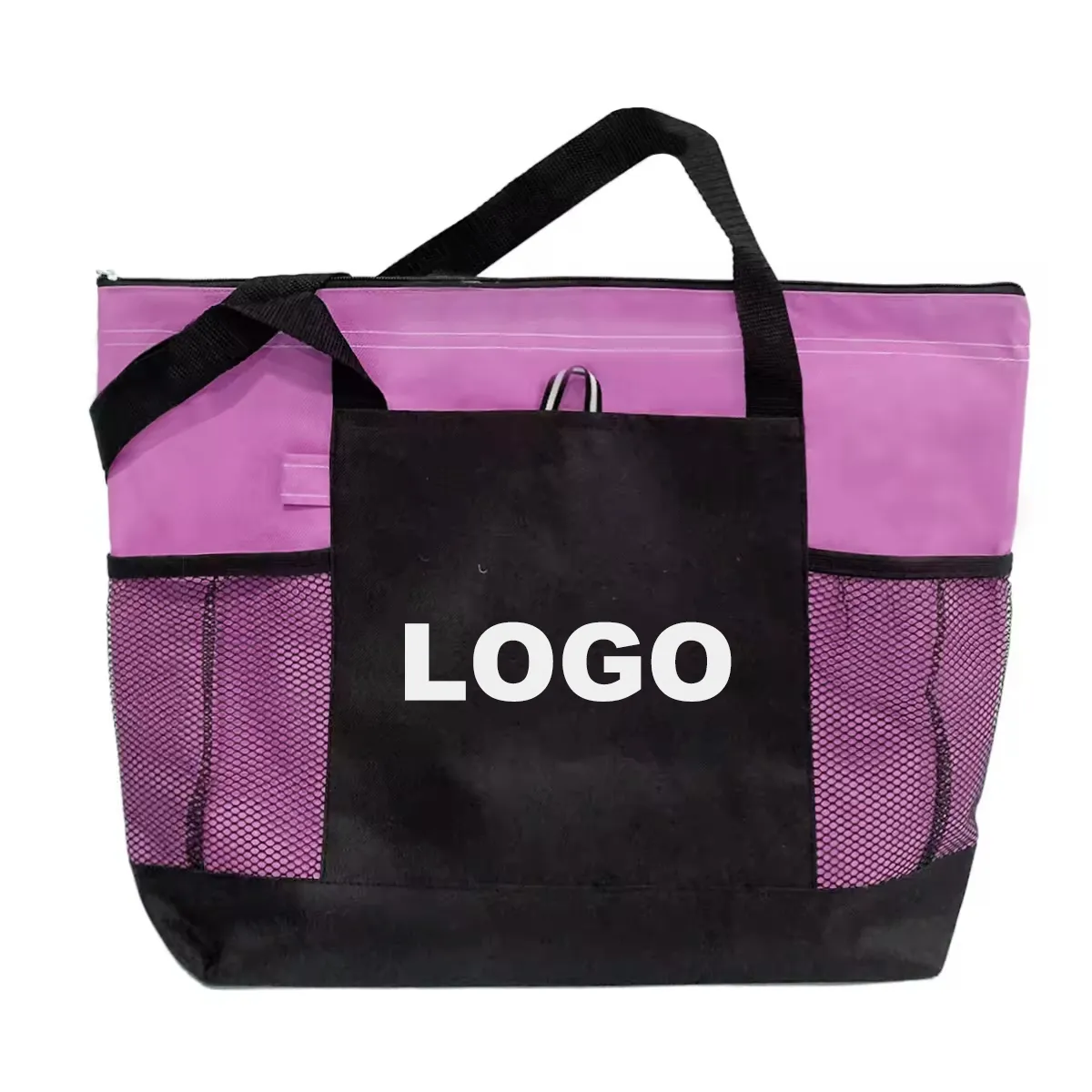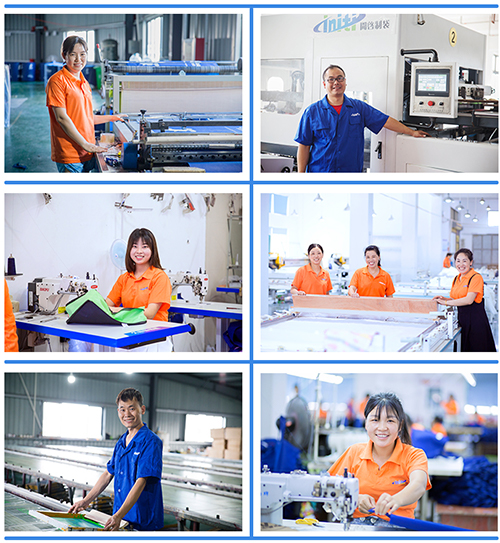Nylon Bag vs Polyester Bag: Whats the Real Difference?
Nylon Bag vs. Polyester Bag: What’s the Real Difference? How Should Your Business Choose?
When shopping for a bag, have you ever been confused by the label that reads “nylon” or “polyester”? Most people first consider color, design, or capacity. However, material is the real key to determining a bag’s lifespan, texture, and suitability. Nylon and polyester are two of the most commonly used synthetic materials in the bag industry. While they may look similar, they each come with distinct properties. Whether you're a consumer or a bag manufacturer, understanding the differences between them helps make better, more strategic choices.
Nylon vs. Polyester: Key Material Differences
Nylon, invented in the 1930s, is a polyamide fiber known for its strength and silky texture. It’s widely used in high-performance gear due to its abrasion resistance and slight elasticity. Polyester, derived from petroleum-based polymers, is known for its shape retention and colorfastness. A nylon bag feels smoother and more premium, while a polyester bag tends to have a stiffer structure and a more budget-friendly cost.
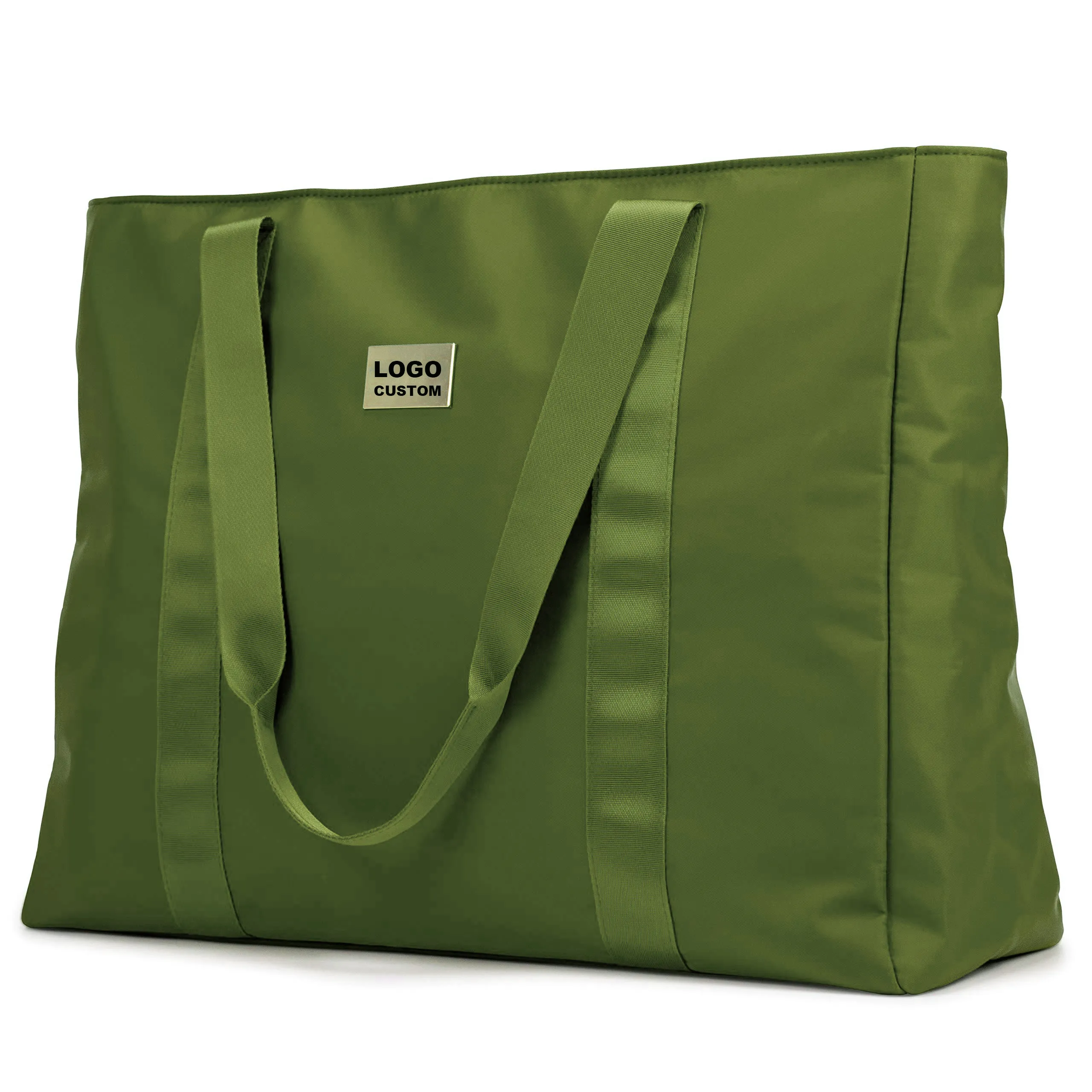
Summary of Material Characteristics:
Nylon Bag:
Soft, elastic, stretch-resistant. Dries slower and may fade slightly over time with sun exposure.
Polyester Bag:
Stiff, UV-resistant, colorfast, and fast-drying. Better suited for vibrant prints and large-scale production.
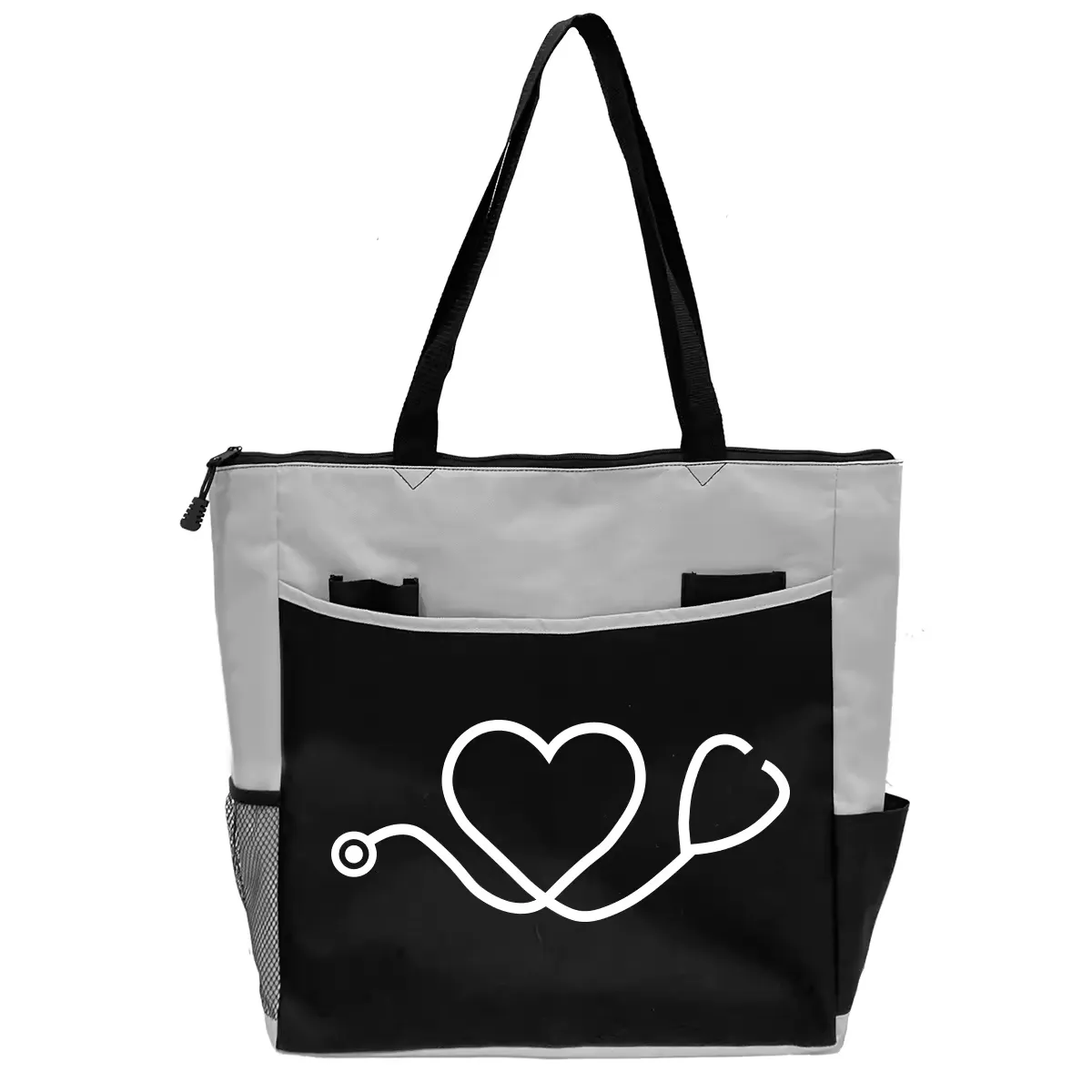
Material & Usage: Matching Bags to Function
Nylon Bags:
With its strength and water resistance, nylon is ideal for backpacks, gym bags, and travel gear. For example, a custom nylon bag made for hiking can withstand rugged terrain and sudden rain—perfect for outdoor lovers. In the fashion world, its glossy texture fits well with modern tote bags and minimalist urban styles.
Polyester Bags:
Polyester shines in everyday applications like shopping bags, promotional custom bags, and lightweight drawstring pouches. It holds color and prints very well, making it ideal for bag factories producing marketing merchandise or event giveaways.
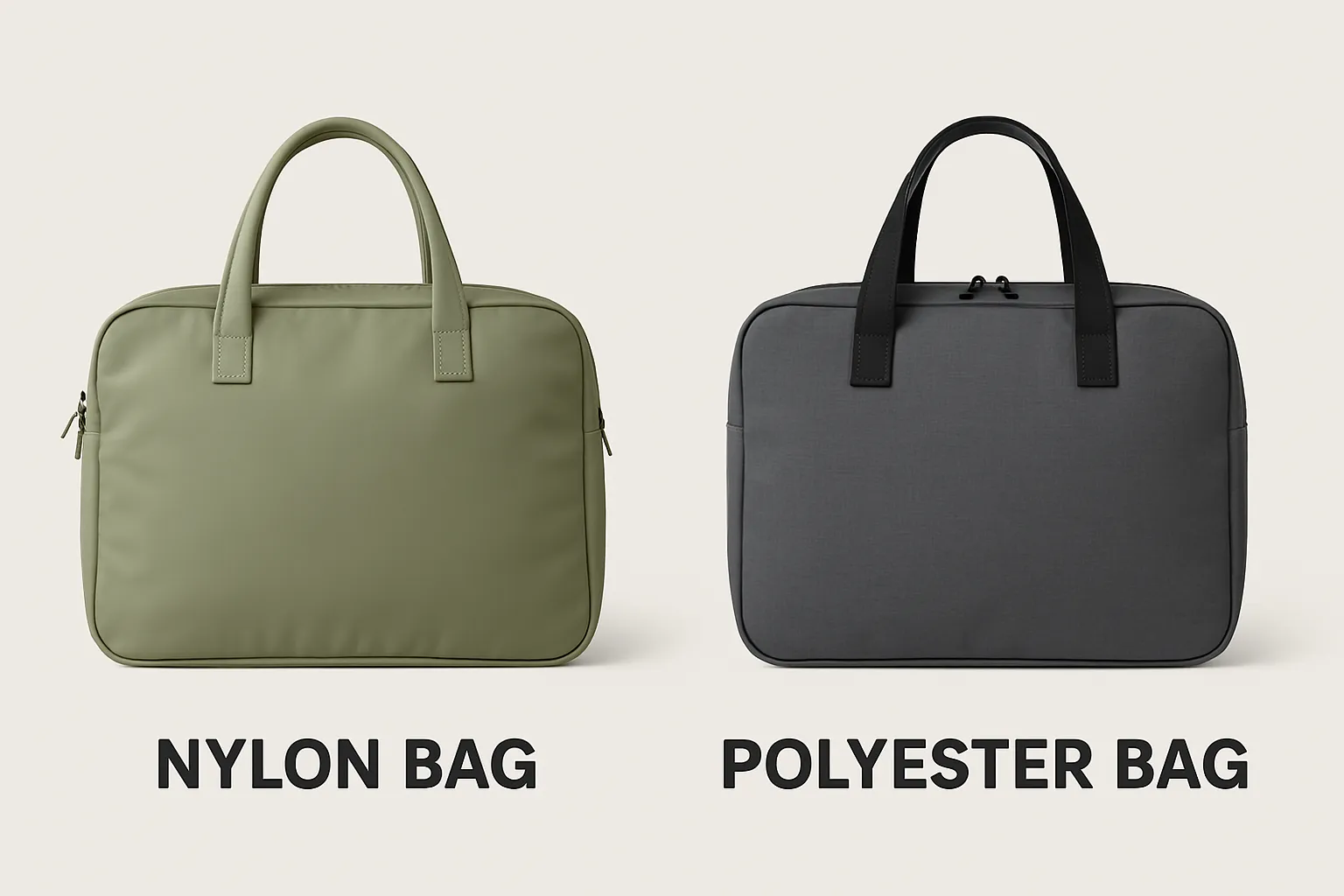
| Feature | Nylon Bags | Polyester Bags |
| Strength & Durability | Higher tensile strength, more stretch | Stiffer, slightly less durable in abrasion |
| Water Resistance | Absorbs more water, but can be coated for waterproofing | More naturally water-resistant |
| Weight | Lighter and softer | Slightly heavier and rougher |
| Texture & Feel | Smooth, silky, flexible | Coarse, more rigid |
| Color Retention | Slightly less UV-resistant, may fade faster outdoors | Excellent color retention and UV resistance |
| Drying Time | Slower due to higher water absorption | Dries faster |
| Cost | Generally more expensive | More budget-friendly |
| Eco-Friendliness | Both are synthetic; recycled options available for both | |
| Common Uses | Travel bags, outdoor gear, drawstring bags | Shopping bags, promotional totes, backpacks |
Nylon vs. Polyester Bags: Key Differences
The Eco, Fashion, and Functional Impacts Behind the Choice
Material choice reflects not just performance—but also brand values, especially in today’s consumer landscape.
Environmental Trends:
Traditional nylon production is energy-intensive. However, recycled nylon (like ECONYL) is gaining attention for its sustainability. Meanwhile, recycled polyester (rPET) is already widely adopted in eco-friendly custom bag manufacturing, thanks to its mature recycling processes.
Fashion Trends:
From Prada’s revival of the classic nylon mini bag to minimalist brands embracing polyester, material selection speaks to modern aesthetics and consumer preference.
Functional Considerations:
For a bag manufacturer, nylon’s flexibility can challenge automated sewing and cutting. Polyester, with its consistency, is easier to process on industrial production lines, reducing labor and defect costs.
B2B Perspective: How Bag Factories Should Weigh the Material Decision
For bag factories and brand procurement teams, material choice involves deeper concerns around cost, risk, and scalability.
Cost Efficiency:
Polyester is typically 10–20% cheaper than nylon. It's easier to print, heat-transfer, and process, making it ideal for bulk custom bag production. Nylon, while more expensive, justifies its price in premium and technical products.
Supply Chain Stability:
Polyester has a stable supply chain, less impacted by crude oil fluctuations. Nylon, on the other hand, is more volatile due to its complex production and higher dependence on imports, which may lead to shortages or price spikes.
Technology & Competitive Edge:
Producing high-quality nylon bags requires more advanced weaving technology, creating technical barriers for new entrants. Polyester is easier to handle, giving small to mid-sized bag manufacturers a lower barrier to entry. Technologies like laser cutting and heat transfer printing also favor polyester, leading many manufacturers to specialize in polyester-based production.
Market Trends & Forecasting:
Google Trends shows a consistent rise in “sustainable bags” searches. This has encouraged many bag manufacturers to adopt recycled polyester. Polyester also aligns more easily with certifications like GRS (Global Recycled Standard), which are becoming essential for global brand collaborations. Meanwhile, nylon maintains an edge in the luxury and outdoor sectors—Patagonia, for instance, leverages nylon’s durability for its premium outdoor gear.
Case Studies & Industry Data
Timbuk2, a well-known American bag manufacturer, uses high-strength nylon in products like its Classic Messenger, which is favored by urban cyclists for its water resistance and ruggedness.
Adidas, by contrast, mass-produces polyester backpacks that are affordable, durable, and colorful—reaching a broader market with scalable production.
According to Textile Exchange (2022), recycled polyester accounted for 14% of global polyester production, signaling a strong shift in how bag factories are aligning with eco-friendly practices.
Final Thoughts: There's No One-Size-Fits-All in Bag Materials
Both nylon and polyester have clear advantages. The best choice depends on your use case, brand positioning, and production strategy.
For end-users, knowing the performance differences helps you choose a bag that lasts longer and fits your lifestyle.
For bag factories and bag manufacturers, the material you choose affects everything—from costs and risks to branding and future competitiveness.
Choosing the right material is not just about the bag—it’s about building a better business
Hot Tags:Shopping Bag,corduroy bag,China, suppliers, manufacturers, factory, wholesale, in bulk, for sale,tote bag ideas,canvas bags for storage,cotton shoulder bag, rpet bag, custom garment bags,canvas drawstring bags,Insulated lunch cooler bag,makeup cosmetic bag for sale,Grocery and Shopping tote bag,Beach Accessories,Jute/hemp/burlap tote bag,Corduroy tote bag,Travel bag,Linen bag,Paper bag

